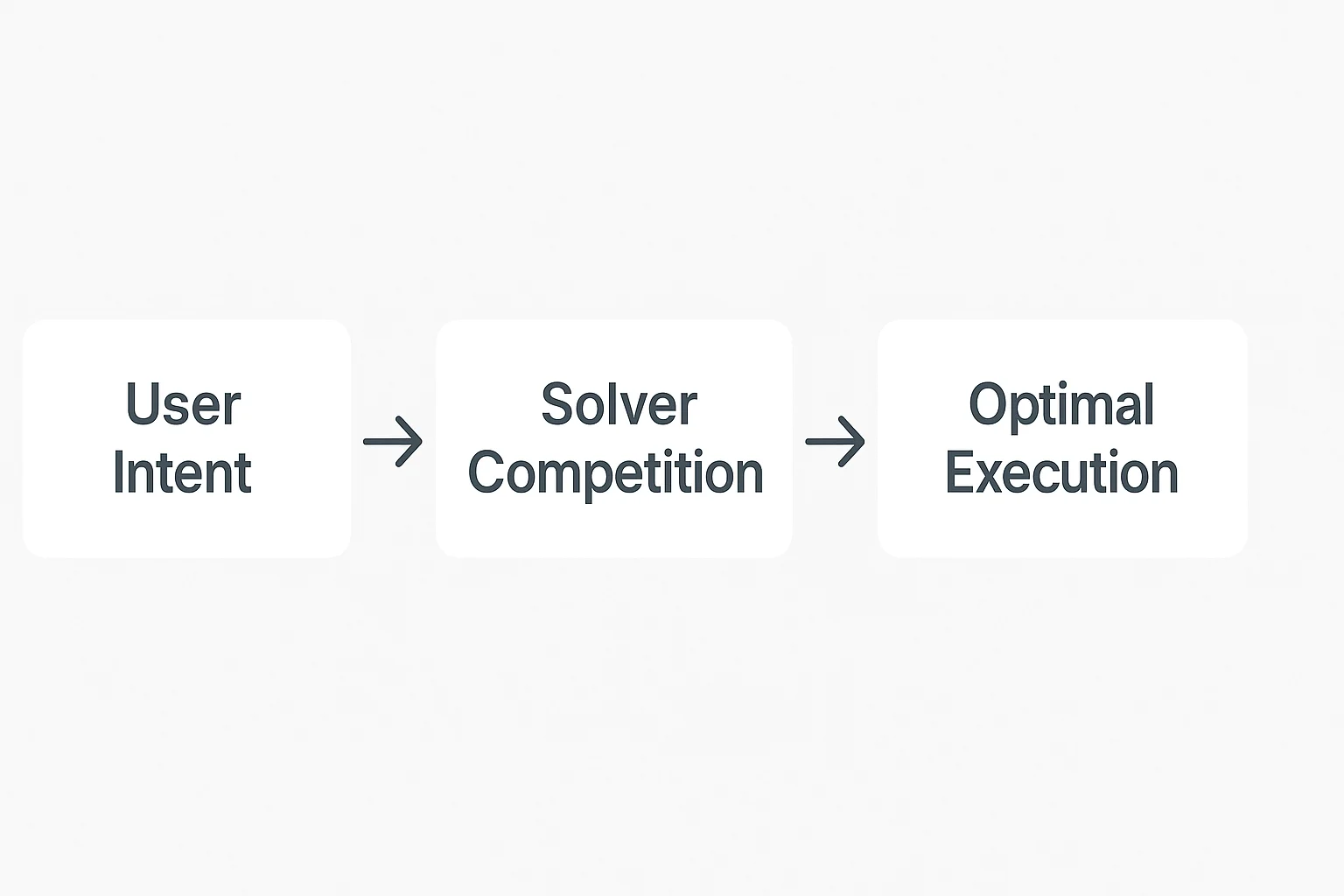Intent-Centric Protocols
Intent-Centric Protocols: What You Want, Not How
Intent-centric protocols let users specify desired outcomes while the system figures out how to achieve them. Instead of manually executing swap steps, you just say “I want USDC” and the protocol handles everything.
Intent-centric protocols allow users to express desired end states rather than specific transaction sequences. Users declare what they want to achieve, and sophisticated solvers compete to find the most efficient execution path.
How Intent-Centric Protocols Work
Intent declaration specifies desired outcomes like “swap my ETH for at least 1,800 USDC” without defining the specific DEXs, routes, or steps required.
Solver competition involves multiple parties competing to fulfill intents at the best possible prices, creating market-driven optimization.
Execution abstraction hides complex multi-step operations from users, who only see the final result rather than intermediate transactions.

Real-World Examples
- CoW Protocol uses intent-based trading with solver competition for better prices
- 1inch Fusion combines intent expression with automated execution optimization
- UniswapX enables gasless swaps through intent-based order matching
Why Beginners Should Care
Simplified complexity eliminates the need to understand optimal routing, slippage management, and multi-step DeFi operations.
Better execution through solver competition often achieves better prices than manual transaction construction.
Reduced friction makes DeFi more accessible by hiding technical complexity behind simple intent expressions.
Related Terms: MEV Protection, Solver Network, Order Flow, Execution Quality
